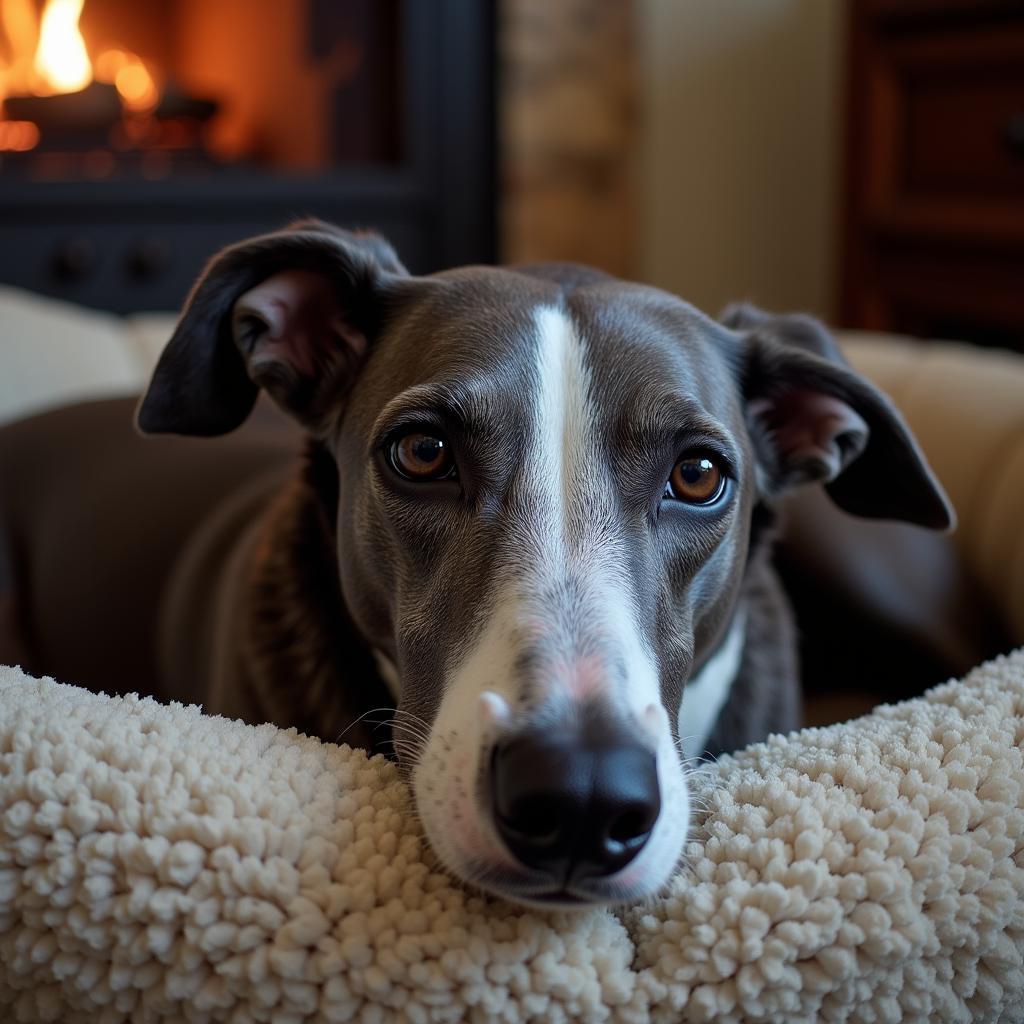Greyhound Dog Food plays a crucial role in maintaining the health and well-being of these incredible athletes. Known for their speed and agility, Greyhounds have specific nutritional needs that differ from other breeds. Choosing the right greyhound dog food can be a daunting task, but this guide will equip you with all the information you need to make an informed decision for your four-legged companion.
Understanding the Greyhound Diet: Why It’s Different
While Greyhounds possess impressive speed and stamina, their digestive systems are surprisingly sensitive. These sleek canines benefit from a diet rich in high-quality protein to support muscle maintenance and repair. Moreover, their fast metabolism requires a higher caloric intake compared to other breeds of similar size.
Key Nutrients for Optimal Greyhound Health
Choosing the best greyhound dog food means prioritizing key nutrients that cater to their unique needs. Look for these essential components:
- Protein: As carnivores, Greyhounds thrive on a diet rich in animal-based protein. Chicken, fish, and lamb are excellent sources.
- Fat: Don’t shy away from healthy fats! They provide a concentrated energy source that fuels their active lifestyle.
- Carbohydrates: While not the primary source of energy, digestible carbohydrates like brown rice and sweet potatoes offer sustained energy release.
- Glucosamine and Chondroitin: These joint-supporting supplements are especially important for Greyhounds, who are prone to joint issues.
Decoding Dog Food Labels: A Greyhound Owner’s Guide
Navigating the world of dog food labels can feel like deciphering a foreign language. Here’s a breakdown to help you choose wisely:
- Ingredient List: Remember, ingredients are listed in descending order by weight. Look for whole meat sources at the top of the list, indicating a higher protein content.
- Guaranteed Analysis: This section reveals the minimum percentages of protein, fat, fiber, and moisture in the food.
- Life Stage: Opt for food specifically formulated for your Greyhound’s life stage, whether it’s a puppy, adult, or senior.
Common Greyhound Feeding Mistakes to Avoid
- Overfeeding: While Greyhounds need a calorie-dense diet, overfeeding can lead to obesity and health problems. Follow feeding guidelines and consult your veterinarian.
- Table Scraps: Resist the urge to share human food with your Greyhound. Many common human foods are toxic to dogs.
- Sudden Diet Changes: Introduce new food gradually to avoid digestive upset. Mix a small amount of the new food with the old over several days.
Addressing Specific Dietary Needs: Allergies and Sensitivities
Just like humans, Greyhounds can develop food allergies or sensitivities. Common culprits include chicken, beef, and wheat. If you notice signs like itchy skin, digestive issues, or ear infections, consult your veterinarian. They can help you identify the trigger and recommend a hypoallergenic or limited-ingredient diet.
The Importance of Hydration: Water is Key
Never underestimate the importance of fresh, clean water for your Greyhound. Water is essential for digestion, nutrient absorption, and temperature regulation. Ensure your Greyhound always has access to an ample supply of water, especially after exercise or during hot weather.
Gain Dog Food: Nourishing Your Greyhound from the Inside Out
When it comes to finding a high-quality diet tailored to the unique needs of your Greyhound, gain dog food stands out as an excellent option. Formulated with premium ingredients and a focus on optimal nutrition, Gain Dog Food provides the building blocks for a healthy, active life.
FAQs: Greyhound Feeding Edition
Q: How much should I feed my Greyhound?
A: The amount of food your Greyhound needs varies depending on factors like age, activity level, and metabolism. Consult feeding guidelines on the food packaging and your veterinarian for personalized advice.
Q: Can Greyhounds eat raw food?
A: Raw food diets are becoming increasingly popular, but it’s crucial to consult your veterinarian before making any significant dietary changes.
Q: My Greyhound is a picky eater. What should I do?
A: Picky eating can be frustrating. Try different flavors and textures of high-quality food, and consider adding warm water or a low-sodium broth to enhance the aroma.
 Senior greyhound resting indoors
Senior greyhound resting indoors
Nourishing the Legend: Your Greyhound’s Health is Priceless
Choosing the right greyhound dog food is an investment in your furry friend’s long-term health and happiness. By understanding their unique dietary needs and following the guidelines in this guide, you can ensure your Greyhound receives the optimal nutrition they deserve to thrive. Remember, a well-nourished Greyhound is a happy and energetic companion for years to come.
For further assistance, please contact our dedicated team at Phone Number: 02437655121, Email: minacones@gmail.com or visit us at 3PGH+8R9, ĐT70A, thôn Trung, Bắc Từ Liêm, Hà Nội, Việt Nam. We offer 24/7 customer support to answer any questions and guide you towards the best choices for your Greyhound’s nutritional needs.